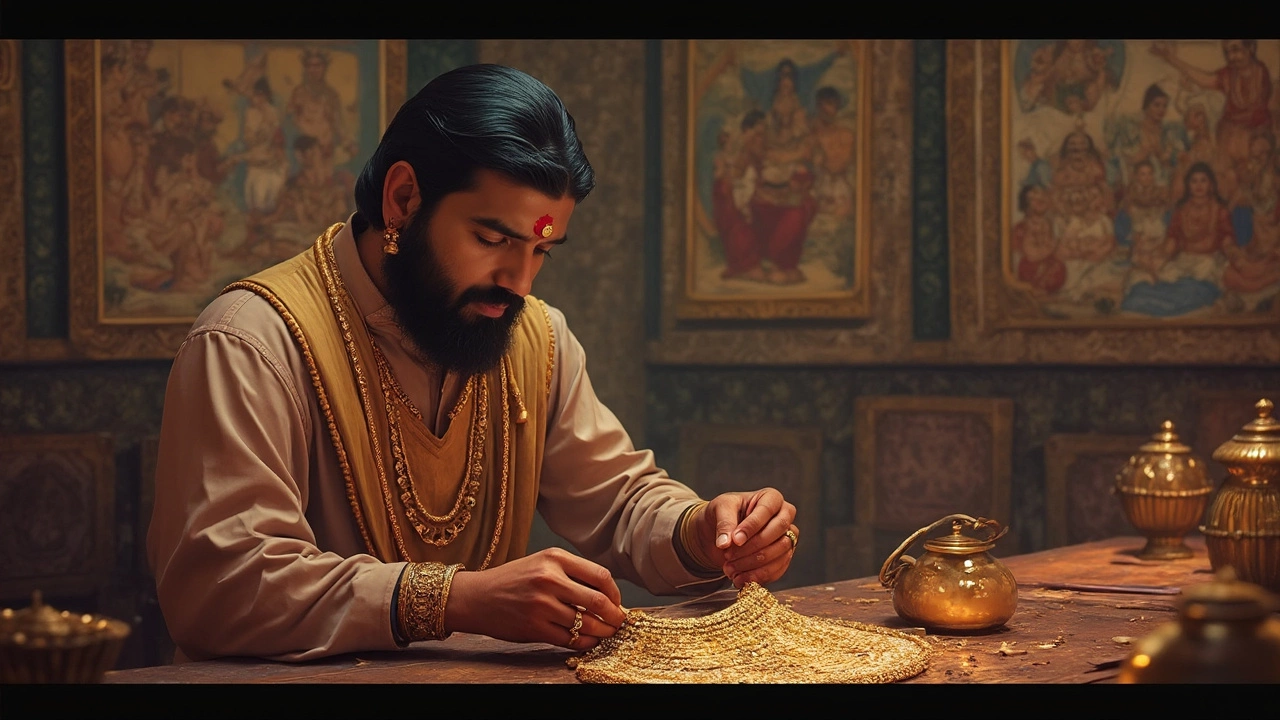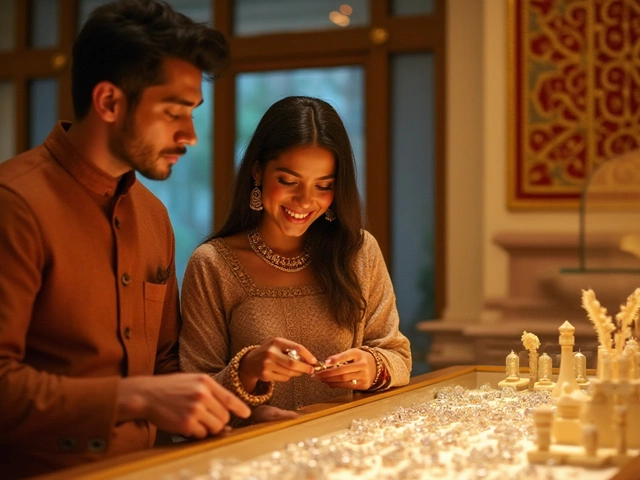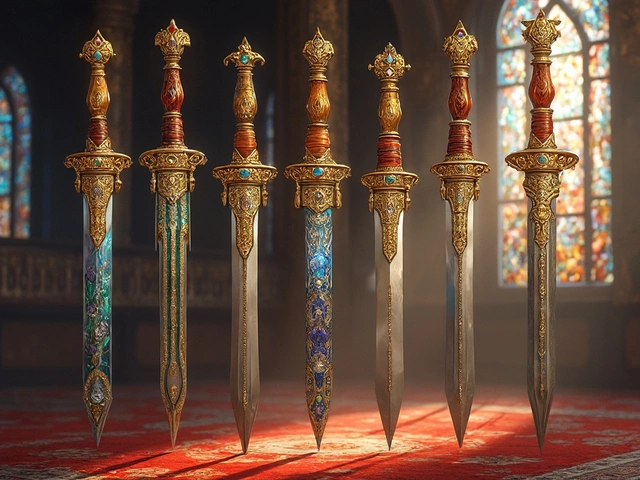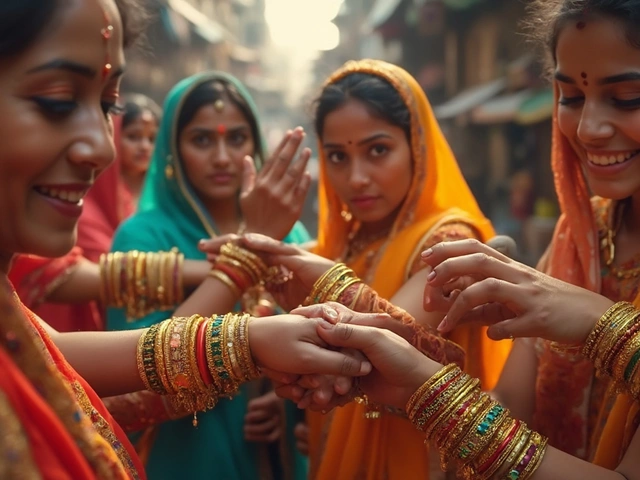When you think about India's wealth in jewels, temple jewellery stands out, not just for its sheer opulence but also for its cultural resonance. These jewels aren't just showpieces—they're deep-rooted in the traditions observed by various communities across the country. Imagine walking into a temple, and seeing intricate gold designs that seem like they've been plucked straight out of a royal treasure trove. It's not just an experience for your eyes; it's a journey through Indian history where each piece tells a sacred story.
So, what's the big deal with temple jewellery? Well, these pieces aren't just for adornment. Crafted meticulously, often over months, they hold spiritual and cultural significance passed down through generations. Often inspired by deities, mythological tales, and the natural world, they embody devotion, purity, and sanctity.
- The Origins and Significance of Temple Jewellery
- Iconic Temple Jewels: Standout Pieces
- Preservation and Access: Viewing these Treasures
- Contemporary Influence of Temple Jewellery
The Origins and Significance of Temple Jewellery
Temple jewellery isn't just bling; it's a window into India's rich cultural past. Dating back to the Chola dynasty in South India, these masterpieces were initially crafted for adorning deities in temples. Over time, the temple jewellery India became an integral part of classical dance forms like Bharatanatyam and Kuchipudi, adding a vibrant touch to performers' costumes.
This style of jewellery plays a vital role in connecting worshippers to their faith. Each piece is meticulously handcrafted, often depicting gods, goddesses, and motifs drawn from nature and mythology. It's like wearing a piece of history, reminding devotees of age-old traditions and the divine narratives that shape their beliefs.
The Craftsmanship Behind Temple Jewels
Creating temple jewellery is a labor of love. Skilled artisans use traditional methods handed down through generations. The process is intricate, involving molding designs onto wax models, pouring molten gold, and setting precious stones. This isn't just craftsmanship; it's artistry at its finest, showcasing the opulence of richest jewellery India through every ornament.
Some epicenters of this craft include Nagercoil and Madurai in Tamil Nadu. Here, families have continued this legacy, maintaining the authenticity and grandeur these treasures demand. It's like a silent vow, a promise to preserve history through their hands.
Temple jewellery has become more than religious symbols; they're a blend of faith and fashion. As trends shift, designers are blending traditional elements with contemporary styles, making these pieces more accessible while retaining their rich heritage. Whether you're walking through a bustling market or attending a posh wedding, flashes of temple jewellery can add a touch of tradition and style, representing the continuous evolution of Indian artistry.
Iconic Temple Jewels: Standout Pieces
Some jewels in India are so famous that they leave you in awe, and temple jewellery is no exception. When it comes to temple jewellery India, a few pieces have made a significant mark, renowned not just for their beauty but also for their history and craftsmanship.
The Sri Padmanabhaswamy Temple Treasures
If you're talking about the richest jewellery in India, then the treasures from the Sri Padmanabhaswamy Temple in Kerala have to top the list. Discovered in secret vaults, these pieces include unimaginable quantities of gold, silver, and precious stones. One can't overlook the golden idol of Mahavishnu, intricately detailed, which showcases the faith poured into these masterpieces.
The Tanjore Brihadeeswara Temple Jewels
Next on the list are the jewels from the Brihadeeswara Temple in Tanjore. Much of this Indian temple jewels collection draws inspiration from the Chola dynasty. You’ll find grand crowns, necklaces, and armlets, each holding ancient techniques of goldsmithing and gem-setting.
The Tirupati Balaji Temple Ornaments
The Tirupati Balaji Temple, too, houses a rich collection of jewels. One of its standout pieces is a diamond-studded crown, which is said to be one of the biggest of its kind. Devotees often donate precious items like emerald studded ornaments, adding to this incredible collection over time.
The Golden Chariots
But let's not forget the eye-catching golden chariots found in many Southern temples, such as at the Sabarimala Temple. These aren't just for show; they're rolled out during festivals, adding a glimmering spectacle to religious celebrations.
These standout pieces aren't just wealth locked away; they're living pieces of history, still playing a role in the daily rituals and festivals of temples. They provide a bridge between our past and present, showcasing how much our ancestors valued artistry and devotion. In this way, temple jewellery India continues to enchant and captivate us.

Preservation and Access: Viewing these Treasures
Seeing these stunning temple jewellery India pieces up close can be an awe-inspiring experience, but they're not something you can just walk up to any time. Preservation of these sacred jewels requires careful attention and dedication. These treasures are usually stored in temples themselves, tucked away from the public eye and only presented during significant religious events.
When you do get the chance to view them, it's often during a grand festival or auspicious day when the jewellery is brought out for processions or ceremonial purposes. Such moments are steeped in spirituality, and the air is charged with color, music, and excitement. For instance, during the annual Panguni Peruvizha festival, the Kapaleeshwarar Temple in Chennai displays some of its most precious items.
How are these jewels kept safe? Well, temples generally have high-security measures with dedicated teams responsible for their maintenance and upkeep. It's not just about keeping them secure but also ensuring they're preserved for future generations. Regular checks by experts see to it that the jewels suffer no damage over time.
Access: How You Can See Them
Getting a peek at these amazing pieces typically means traveling to the temple itself. While some temples provide regular access through guided tours, others are more restrictive. The Tirumala Venkateswara Temple, for instance, is known for its rich collection of jewellery. While direct viewing might be limited, participating in temple rituals can allow glimpses of these splendid ornaments.
A tip for visitors: plan your visit around major festivals or unique temple events, as these times generally offer the best chances to experience the jewelry in all its glory. Always remember to respect local customs and dress codes when visiting these sacred spaces.
Contemporary Influence of Temple Jewellery
Today, temple jewellery isn't just confined to religious ceremonies or festivals. It's made its mark in the fashion world, finding a place in modern wardrobes while sticking close to its roots in tradition and craftsmanship. Thanks to designers blending antique designs with contemporary twists, these pieces have become incredibly popular outside of traditional settings.
With a growing interest globally, especially among the younger generation eager to reconnect with their heritage, temple jewellery has found its spot on international fashion runways. Celebrities and fashion icons often choose temple jewellery for its bold statement of elegance and cultural depth.
Modern Fusion and Redesign
The fusion of temple jewellery with contemporary styles is creating a buzz. Designers take inspiration from traditional motifs, like peacocks and deities, transforming them into sleek, modern designs. This approach doesn't just appeal to Indian audiences but charms fashion lovers worldwide, making temple jewellery a staple in bridal collections and festive attire.
Commercial Popularity and Export
India boasts a flourishing jewellery export market, with temple jewellery playing a significant role. These jewels attract a substantial fan base internationally, appreciated for their intricate designs and unique cultural essence. They serve as a perfect coming together of India's rich past and present-day design sensibilities.
Statistics and Market Trends
The demand for these spectacular pieces is on the rise. An interesting bit is that, according to a study, around 40% of buyers today are millennials, showcasing a shift toward embracing tradition in modern ways.
| Year | Temple Jewellery Market Growth (%) |
|---|---|
| 2020 | 8.5% |
| 2021 | 11.2% |
| 2022 | 13.7% |
This data just goes to show how embracing cultural heritage can be both fashionable and lucrative!



